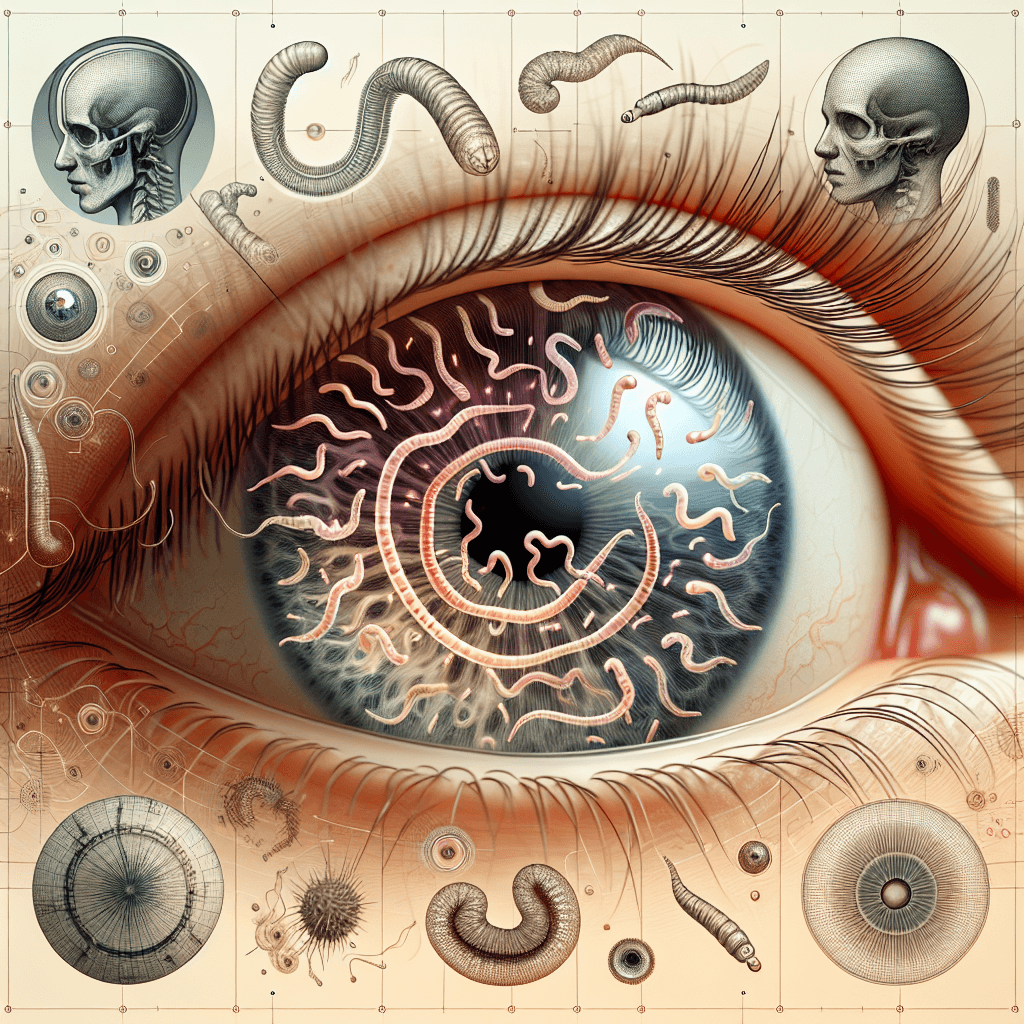What causes those little transparent worms to float across your eyes
They aren't really worms, but the truth behind those phantom squiggles is a fascinating story happening right inside your own eye.


Too Long; Didn't Read
TLDR: Those transparent worms are called eye floaters. They are tiny clumps of protein floating in the gel inside your eyeball that cast shadows on your retina. This is usually a normal and harmless part of aging.
Seeing Squiggles? What Causes Those Little Transparent Worms to Float Across Your Eyes?
Have you ever gazed at a bright blue sky or a blank computer screen and noticed them? Tiny, transparent squiggles, dots, or cobweb-like strands that drift aimlessly across your field of vision. When you try to look directly at them, they dart away, only to reappear when your eyes settle. While you might call them "eye worms" or "squiggles," these apparitions are a very common phenomenon. They aren't living organisms or dust on your eye's surface. This post will demystify these visual curiosities, exploring what they are, what causes them, and most importantly, when they might be a sign to see a doctor.
Debunking the "Worms": Meet Your Vitreous Humor
First, let's get one thing straight: those floating shapes are not actually worms. They are called eye floaters, or muscae volitantes (Latin for "flying flies"), and they exist inside your eye.
Your eyeball is filled with a clear, gel-like substance called the vitreous humor. Think of it as the Jell-O that helps your eye maintain its round shape. The vitreous is composed of about 99% water and 1% a network of collagen fibers and hyaluronic acid.
As we age, this perfect gel starts to change. The collagen fibers begin to clump together, and the vitreous becomes more liquid. These tiny clumps of collagen drift around in the watery center of your eye. When light enters your eye, these clumps cast shadows on your retina—the light-sensitive tissue at the back of your eye. What you perceive as a "floater" is actually the shadow of this microscopic debris. This is why they are most noticeable against a bright, uniform background like a clear sky or a white wall.
The Usual Suspects: Why Do Floaters Appear?
While almost everyone experiences a floater at some point, certain factors can make them more common. The primary cause is the natural aging process.
- Age-Related Changes: After the age of 50, the vitreous gel naturally begins to shrink and pull away from the retina. This process is called Posterior Vitreous Detachment (PVD). According to the National Eye Institute, PVD is a common, often harmless condition and a leading cause of new floaters. As the vitreous pulls away, it can create a sudden flurry of new floaters, sometimes including a larger one described as a "cobweb" or "ring."
- Nearsightedness (Myopia): People who are nearsighted often experience floaters at a younger age. The elongated shape of a myopic eye may accelerate the process of the vitreous liquefying.
- Inflammation or Injury: Uveitis, an inflammation inside the eye, can cause inflammatory cells to be released into the vitreous, appearing as floaters. Similarly, a direct injury to the eye can cause bleeding or debris to enter the vitreous.
Red Flags: When Floaters Signal a Problem
For the vast majority of people, floaters are a harmless annoyance that the brain eventually learns to ignore. However, certain symptoms accompanying floaters can be warning signs of a serious, vision-threatening condition and require immediate medical attention from an optometrist or ophthalmologist.
See a doctor immediately if you experience:
- A sudden, dramatic increase in the number of floaters.
- The appearance of flashes of light (photopsia), which can look like lightning streaks or camera flashes.
- A shadow or dark curtain appearing in your peripheral (side) vision.
- A sudden decrease in your vision.
These symptoms could indicate a retinal tear or retinal detachment. This occurs when the shrinking vitreous pulls hard enough on the retina to tear it. Fluid can then leak through the tear and lift the retina off the back of the eye, much like wallpaper peeling from a wall. A retinal detachment is a medical emergency, and prompt treatment is crucial to prevent permanent vision loss.
Conclusion
Those little transparent worms floating across your vision are, in most cases, a perfectly normal and benign part of how our eyes change over time. They are simply shadows cast by tiny collagen clumps within the vitreous humor. While they can be distracting, they are usually nothing to worry about. The key is to be aware of your own "normal." Understanding the difference between a typical, long-standing floater and the sudden onset of new symptoms is vital for your eye health. If you ever notice the red-flag symptoms—a sudden shower of floaters, flashes of light, or a curtain in your vision—don't hesitate. An urgent eye exam could save your sight.


